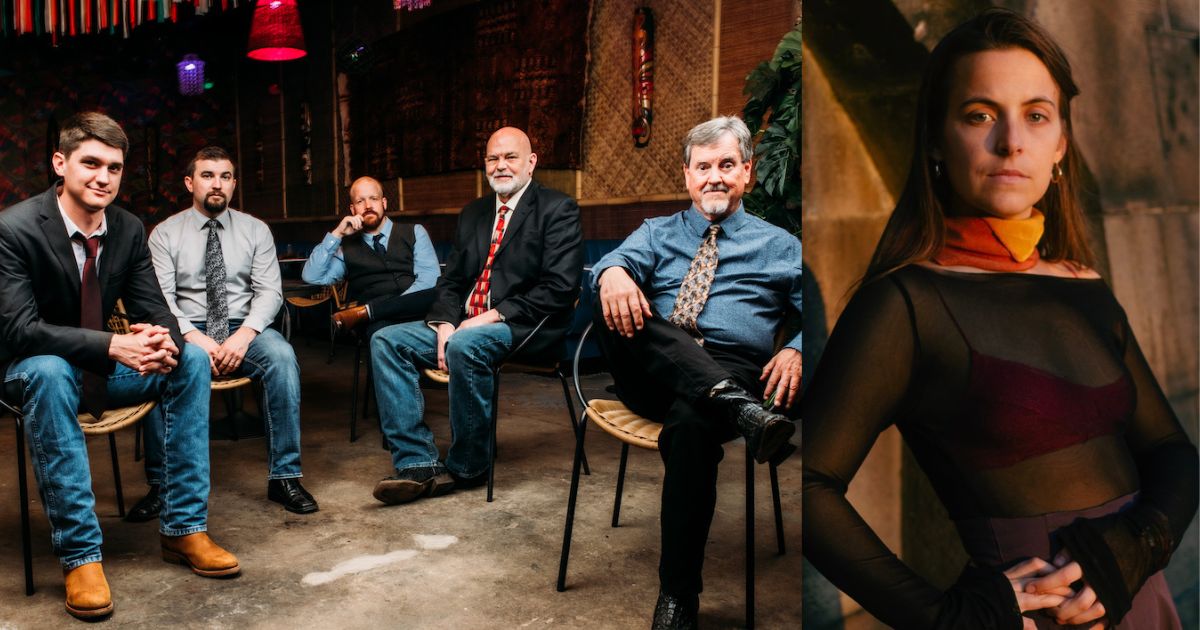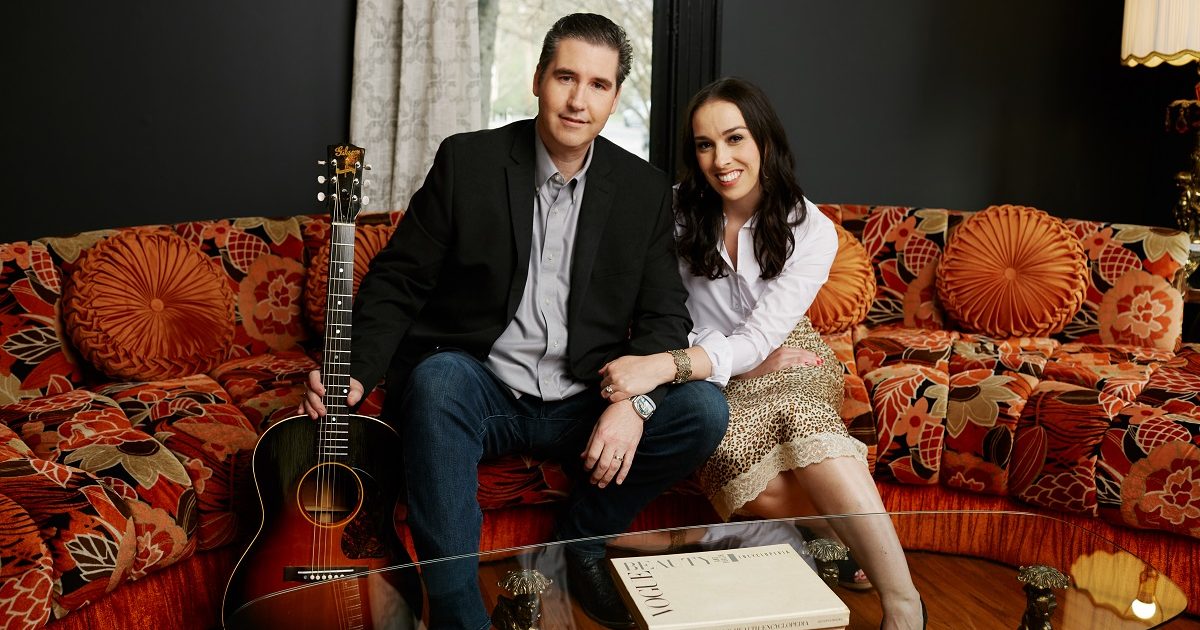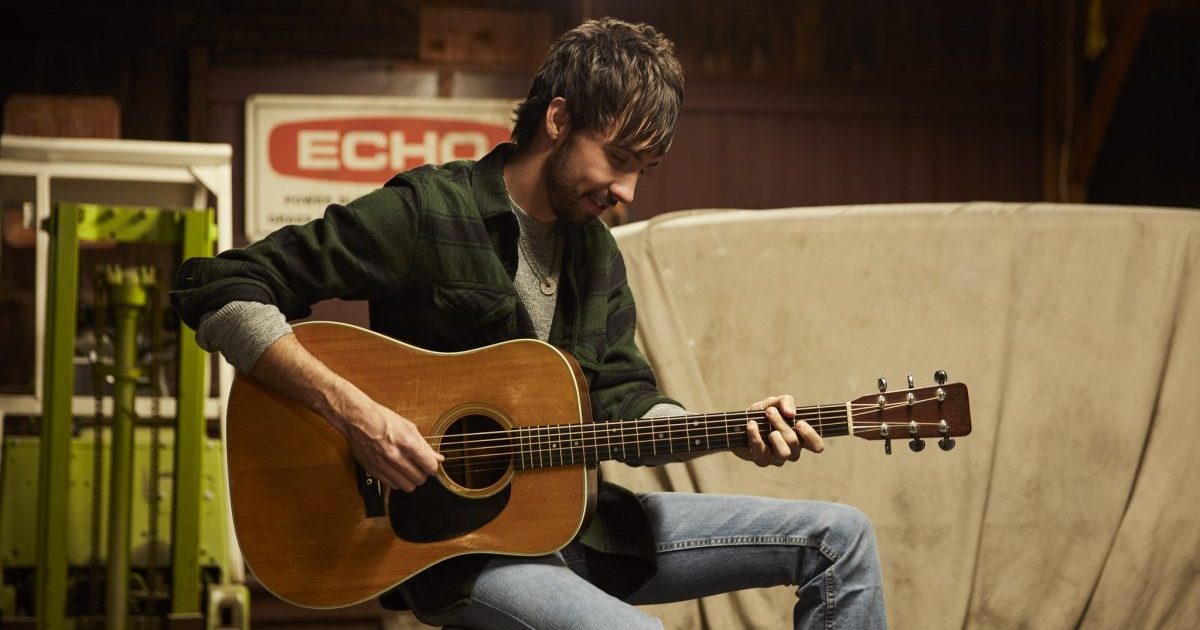Where did the first month of 2025 go!? Wherever it went, we’ve got an excellent batch of premieres for your final New Music Friday of January.
Below, check out brand new music and performance videos like Amanda Bjorn’s “Until We Become Earth,” a song about searching for yourself set to a gorgeously warm and retro video shot on film. Pitney Meyer (a duo of longtime country and bluegrass pals, John Meyer and Mo Pitney) bring a live performance of their new single, “Bear Creek Clay,” as well.
Bluegrass mainstays Lonesome River Band bring back a Jimmy Yeary song that Sammy Shelor turned into a classic, “I’m On To You,” with the full LRB on this new rendition. Plus, Dave Murphy calls on Mark Erelli for his new number, “Planet of Pain II,” a sequel to the original “Planet of Pain” from his 1998 album, Under the Lights.
Elsewhere, don’t miss Joshua Finsel’s “Before the Snow,” about through hiking the Appalachian Trail and cresting Mount Katahdin in Maine before wintertime hits. And, Lily Talmers celebrates release day for her new album, It’s Cyclical, Missing You, by bringing us that project’s lush and deep folky title track.
It’s all right here on BGS – we’ve said it before, we’ll say it again: You Gotta Hear This!
Amanda Bjorn, “Until We Become Earth”
Artist: Amanda Bjorn
Hometown: Los Angeles, California and Spain
Song: “Until We Become Earth”
Album: That Kind of Woman
Release Date: January 24, 2025 (single)
In Their Words: “‘Until We Become Earth’ is the first single off my upcoming debut album, That Kind of Woman, which is set to release in April 2025. A blend of blues and folk with a bit of Americana, the new album reads like a diary touching on major changes in my life – balancing motherhood with artistry, finding and losing myself within relationships, postpartum mental health, and the transformation that happens from living abroad and returning home.
“The song was written in a School of Song workshop with one of my favorite songwriters, Adrianne Lenker, exactly one year ago. Without ruining it, the song is about that search for self-identity within a relationship, the vulnerability of building your own voice, and the risk it takes to keep expanding.
“With the help of my old friend, producer Aaron Stern, I recorded the album this past summer in Los Angeles at Verdugo Sound. With the help of some very talented musicians, we performed live together in the same room for most of the album, our aim was to capture the magic of improvisation and the authentic energy that arises from truly listening and connecting, free from a click track.” – Amanda Bjorn
Track Credits:
Phillip Krohnengold – Guitar, keys
Michael Villiers – Drums
Aaron Stern – Bass
Amanda Bjorn – Vocals
Adam Ayan – Mastering
Aaron Stern – Producer
Video Credits: Filmed by Giacomo Gex; color by Ruben Sogomonian; film processed by Kafard Films, Paris, France.
Starring Amanda Bjorn and Brando Wild.
Joshua Finsel, “Before the Snow”
Artist: Joshua Finsel
Hometown: Jim Thorpe, Pennsylvania
Song: “Before the Snow”
Album: No Honey
Release Date: February 6, 2024
In Their Words: “‘Before The Snow’ is a song about an Appalachian Trail through-hiker whose river meditation is interrupted by a daydream. Mount Katahdin in Baxter State Park in Maine is the northern end of the trail, and a hiker must get there ‘before the snow’ in order to be allowed to finish the journey.
“The lyrics are autobiographical. I teamed up with the famed string trio Bizarre Star Strings (Brandi Carlile, Madison Cunningham, The Shins) for the lush, theatrical river-like passages. Award winning fiddle player Katelynn Casper and mandolinist Quentin Fisher of Serene Green added to the arrangements. Finally, David Bowie producer and bass player Mark Plati mixed the record and played fretless bass.” – Joshua Finsel
Lonesome River Band, “I’m On To You”
Artist: Lonesome River Band
Hometown: Floyd, Virginia
Song: “I’m On To You”
Release Date: January 31, 2025
Label: Mountain Home Music Company
In Their Words: “‘I’m On To You’ is a song written by my friend Jimmy Yeary, who has become one of the most in-demand writers in Nashville. I recorded this song back in 1997 and it was the first song Jimmy had featured on an album. The album is long out of print, but this song kept making its way into sound checks and the show every now and then. It has that ’80s country vibe that we felt would lend itself to the sound we are doing for this upcoming album. We hope you like this version!” – Sammy Shelor
Track Credits:
Sammy Shelor – Banjo, vocal
Jesse Smathers – Acoustic guitar, lead vocals
Mike Hartgrove – Fiddle
Adam Miller – Mandolin, vocals
Kameron Keller – Upright bass
Dave Murphy, “Planet of Pain II” (Featuring Mark Erelli)
Artist: Dave Murphy
Hometown: Madison, New Jersey
Song: “Planet of Pain II” featuring Mark Erelli
Album: A Heart So Rare
Release Date: January 31, 2025
In Their Words: “The song is a rumination on the fragility of life, disappointment, lessons learned, and carrying on. This theme is illustrated in my lyrics, ‘Ashes to ashes, dust to dust/ Sometimes it feels like it’s all just too much/ When something is lost (they say) something is gained/ Still finding my way on this planet of pain.’ The original ‘Planet of Pain‘ appeared on my first album, Under the Lights. It was just one voice, one acoustic, and a lap steel. Part II borrows some lyrics, but elevates the song to a different level with the support of Chris Tarrow’s mysterious pedal steel playing, Shawn Pelton’s percussion, and Mark Erelli’s haunting vocals.” – Dave Murphy
Track Credits:
Dave Murphy – Vocals, acoustic guitar
Shawn Pelton – Drums
Chris Tarrow – Electric guitar, pedal steel
Richard Hammond – Bass
Mark Erelli – Backing vocals
Pitney Meyer, “Bear Creek Clay”
Artist: Pitney Meyer
Hometown: Nashville, Tennessee
Song: “Bear Creek Clay”
Album: Cherokee Pioneer
Release Date: January 10, 2025 (single); April 18, 2025 (album)
Label: Curb Records
In Their Words: “‘Bear Creek Clay’ is a song brought to the group by Danielle Yother from North Carolina. It’s a snapshot of a pioneering Daniel Boone-type of character, blazing a trail to a home in the mountains. ‘Bear Creek Clay’ was the title we settled on, which in the moment I figured was something we would come back and edit later, but come to find out, there are creeks and rivers by that name all over Tennessee, Kentucky, and Missouri. Driving through Bon Aqua, Tennessee, I noticed on the map I was nearing a Bear Creek. This was just a few miles from the log cabin where we would be recording. When we cut the song to tape a few days later, I knew we had to drive down to the creek first. The water was brown and rushing fast, swollen from the rains the night before. We made it back to the cabin a bit soaked but ready to step in and sing this song that seemed to be coming to life in the landscape around us.” – John Meyer
Track Credits:
Mo Pitney – Guitar
John Meyer – Banjo
Nate Burie – Mandolin
Blake Pitney – Bass
Jenee Fleenor – Fiddle
Lily Talmers, “It’s Cyclical, Missing You”
Artist: Lily Talmers
Hometown: Birmingham, Michigan and Brooklyn, New York
Song: “It Is Cyclical, Missing You”
Album: It Is Cyclical, Missing You
Release Date: January 30, 2025
In Their Words: “This song is sort of meant to mirror the experience of running up and down a hill, continuously. It was born of witnessing two brothers arguing in a parking lot– the younger, around five years old, was sobbing trying to get his older brother’s attention. The older brother, around age seven, clearly had the awareness that ignoring someone only makes them more desperate for your attention, and wouldn’t look his brother in the eye. The whole record is sort of a big statement of what it means to be in both of these positions, cyclically. I am both the desperate, reaching brother, and the power-hungry, indignant brother who hasn’t learned the responsibility of loving other people.” – Lily Talmers
Track Credits:
Lily Talmers – Vocals, acoustic guitar, music, lyrics
Raffi Boden – Cello
Konstantinos Revelas – Bouzouki
Alec Spiegelman – Clarinet, bass clarinet, flute
David Ward – Drums, percussion
Photo Credit: Lonesome River Band by Sandlin Gaither; Lily Talmers by Bailey Lecat.



